
One of the most consequential crimes in United States history occurred on a summer day in 1844 when a mob stormed a jail in Carthage, Illinois and murdered two of its occupants, Joseph Smith, Jr. and his brother, Hyrum. The killing of Joseph Smith, the charismatic founding prophet of the Church of Jesus Christ of Latter Day Saints, America's most important homegrown religion, led to a schism among Mormons and the trek west to Utah of Brigham Young and his followers. The story of the 1844 murders (or "martyrdoms," as they are often called in LDS accounts) and the trial that followed is much less known than it deserves to be--largely owing to the over-sensitivity of American textbook writers on all matters religious. Events so pivotal in the history of the Mormon Church, which today boasts a worldwide membership of over 14 million and exerts an important influence on debates of moral issues ranging from same-sex marriage to gambling to euthanasia, deserve a broader understanding.
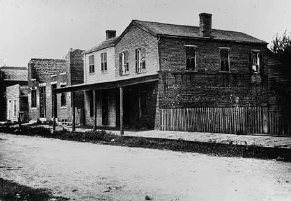
Smith Orders the Destruction of the Nauvoo Expositor
The early 1840s were a time of growing tension between Mormon and non-Mormon settlers in Hancock County, Illinois. In April 1839, Joseph Smith, having escaped from a Missouri jail where he was being held on state treason charges, arrived in northwestern Illinois, near the banks of the Mississippi River, to join Mormons who had begun to locate there in large numbers. Soon, the new city of Nauvoo was established and became a magnet for Mormons from the eastern U.S., Canada, and Europe. By 1844, Nauvoo, with a population of 12,000, rivaled Chicago for the title of the largest city in the state of Illinois.
The growing Mormon economic and political influence in Hancock County did not sit well with all county residents. In 1841, Thomas C. Sharp of Warsaw, Illinois organized an anti-Mormon political party and began publishing vitriolic editorials in his Warsaw Signal newspaper attacking Joseph Smith's concentration of power, the creation of a Mormon military force called The Nauvoo Legion, and Mormon land speculation. From within the Mormon population there was dissension, too, with former church leader John C. Bennett publishing charges that Smith and other church officials were practicing polygamy.
Conflict further escalated in 1843 following the arrest of Joseph Smith by Illinois deputies who sought to send Smith back to Missouri to face charges pending there. Following Smith's rescue by the Nauvoo Legion, the Mormon-dominated Nauvoo City Council adopted an ordinance authorizing review by the mayor of all legal process issuing from outside the city. The city council's action inflamed anti-Mormon sentiment, with Sharp and others complaining that Smith "was above the law."
In the spring of 1844, tensions finally overflowed into violence. In May, a group of about 300 dissenting Mormons headed by former Mormon counselor William Law started holding meetings to voice their outrage over the practice of polygamy and Smith's ever-growing theocratic power in Nauvoo. Among the actions advocated by the group was repeal of the Nauvoo Charter, the state document empowering Nauvoo to exercise legal authority. On June 7, William Law and six associates published what would be the first and only issue of the Nauvoo Expositor, a newspaper created to expose the "abominations and whoredoms" of Smith and other high church officials.
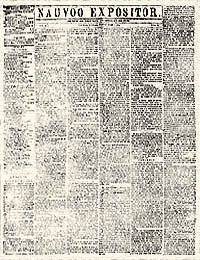
Publication of the Nauvoo Expositor prompted an emergency meeting of the Nauvoo City Council to consider what, if any action, should be taken against what most city council members considered to be a libelous and incendiary newspaper. On June 10, the Council adopted an ordinance ("Ordinance Concerning Libels") that declared the Expositor to be a public nuisance. Immediately following the Council's action, Nauvoo Mayor Joseph Smith issued an order authorizing the destruction of the paper's publications, press equipment, and type: "You are hereby commanded to destroy the printing press from whence issues the Nauvoo Expositor, and to pi the type of said printing establishment in the street, and burn all the Expositors and libelous handbills found within said establishment." At about eight o'clock that evening, Smith's order was carried out.
The destruction of the Nauvoo Expositor whipped anti-Mormon feelings in Hancock County into a frenzy. In Carthage, citizens met and adopted a resolution expressing outrage with Smith's order and with a decision of the Nauvoo Municipal Court dismissing an arrest warrant for Smith, on the charge of inciting a riot, that had been issued the day before by a Hancock County judge. The resolution castigated "the wicked and abominable Mormon leaders" who were behind the destruction of the paper and warned that "a war of extermination" might be necessary. In response to the resolution issuing from Carthage, Smith wrote to Governor Thomas Ford inviting him to come to Nauvoo to help resolve the growing controversy and met with the Nauvoo Legion instructing them to resist if a mob of anti-Mormons attacked the town. Governor Ford declined the invitation. Rumors of an imminent assault on Nauvoo circulated in the town.
The Murder of Joseph and Hyrum Smith
Four days after giving a final speech to the Nauvoo Legion in which Smith declared, "I am willing to sacrifice my life for your preservation," he and his brother Hyrum and a small band of followers crossed the Mississippi River into Iowa, their first stop on a planned journey that would take them to safety in the Rocky Mountains. The next day, however, Smith aborted his journey and returned to Nauvoo after becoming convinced that his surrender to Illinois authorities was the only hope for preventing an anti-Mormon mob from attacking Nauvoo. According to the account of Willard Richards, Smith said to his companions, "I am going like a lamb to the slaughter, but I am as calm as a summer's morning. I have a conscience void of an offense toward God and toward all men. If they take my life, I shall die an innocent man." On June 25, after meeting with Governor Ford in Carthage, Joseph and Hyrum agreed to voluntarily submit to arrest on the charge of inciting a riot at the building housing the Nauvoo Expositor. Later in the day, a second charge was added--treason!--and Justice of the Peace Robert Smith ordered the two Smiths to be held without bail in the Carthage Jail until a hearing, scheduled for June 29, could be held.

On the afternoon of June 27, Smith's fears were realized. One of his Mormon cell mates, John Taylor, provided an eyewitness account:
I was sitting at one of the front windows of the jail, when I saw a number of men, with painted faces, coming around the corner of the jail, and aiming towards the stairs. The other brethren had seen the same, for, as I went to the door, I found Brother Hyrum Smith and Dr. Richards already leaning against it. They both pressed against the door with their shoulders to prevent its being opened, as the lock and latch were comparatively useless. While in this position, the mob, who had come upstairs and tried to open the door, probably thought it was locked and fired a ball through the keyhole. At this Dr. Richards and Brother Hyrum leaped back from the door, with their faces towards it. Almost instantly another ball passed through the panel of the door, and struck Brother Hyrum on the left side of the nose, entering his face and head. At the same instant, another ball from outside entered his back, passing through his body and striking his watch....Immediately, when the ball struck him, he fell flat on his back, crying as he fell, "I am a dead man!" He never moved afterwards.
Brother Joseph as he drew nigh to Hyrum, and, leaning over him, exclaimed, "Oh! my poor, dear brother Hyrum!" He, however, instantly arose, and with a firm, quick step, and a determined expression of countenance, approached the door, and pulling the six-shooter left by Brother Wheelock from his pocket, opened the door slightly, and snapped the pistol six successive times. Only three of the barrels, however, were discharged. I afterwards understood that two or three were wounded by these discharges, two of whom, I am informed, died...The firing of Brother Joseph made our assailants pause for a moment. Very soon after, however, they pushed the door some distance open, and protruded and discharged their guns into the room, when I parried them off with my stick, giving another direction to the balls.
It certainly was a terrible scene. Streams of fire as thick as my arm passed by me as these men fired, and, unarmed as we were, it looked like certain death. I remember feeling as though my time had come, but I do not know when, in any critical position, I was more calm, unruffled, energetic, and acted with more promptness and decision. It certainly was far from pleasant to be so near the muzzles of those firearms as they belched forth their liquid flames and deadly balls. While I was engaged in parrying the guns, Brother Joseph said, "That's right, Brother Taylor, parry them off as well as you can." These were the last words I ever heard him speak on earth....The first thing that I noticed was a cry that he had leaped out of the window. A cessation of firing followed, the mob rushed downstairs, and Dr. Richards went to the window.
The Carthage Greys, the local militia, arrived at the jail just as members of the mob, with their blackened faces, fled the scene. No attempt was made to apprehend any of the fleeing men.
In Nauvoo, "the very streets seemed to mourn," according to one Mormon resident. Town leaders called for calm. On July 1, the Nauvoo City Council adopted a resolution urging private citizens not to seek "private revenge on the assassinators of General Joseph Smith." Meanwhile, editorializing in his Warsaw Signal, Thomas Sharp called the killings a regrettable but justified response to the threat that the Smiths posed for liberty.
Arrests and Trial Preparation
With sentiment in the county on the question of whether to prosecute any of the Smith brothers' killers decidedly mixed, the final decision hinged on the August 1844 election to fill Hancock County offices. When the final votes were counted, Mormon-backed candidates swept to office, including Minor Deming, who became the new sheriff of Hancock County. Soon after his election victory, Deming declared that 200 to 300 people were involved in the Smith murders, and that his office would launch an investigation with an eye to prosecuting those most responsible for the killings. When Governor Ford and a military force of 450 men arrived in the county the following month, many of those most implicated in the murders decided the time was right to flee to Missouri.
On September 22, attorney Murray McConnell, a special agent appointed by the governor, arrived in Nauvoo and began taking testimony from witnesses. Among those McConnell heard from was John Taylor, who implicated Levi Williams, commander of the 59th Regiment of the Illinois Militia, and Warsaw Signal publisher Thomas Sharp. Other testimony suggested the guilt of several prominent dissenters, including Nauvoo Expositor publisher William Law, and Robert and Charles Foster. Arrest warrants were issued for these and several other men. When initial attempts to secure arrests failed, Governor Ford posted $200 rewards each for the arrests of three of the men believed most responsible, Sharp, Williams, and Joseph Jackson, who--in a letter--had confessed his role in the plot.
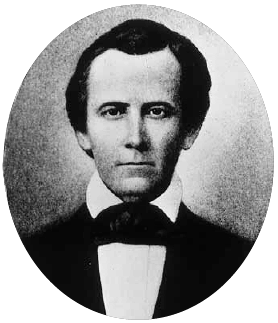
With the most sought-after men safely on the Missouri side of the Mississippi, Illinois officials were forced to negotiate with the fugitives. Only after Governor Ford made several key concessions, such as a promise of a reasonable bail and no state resistance to a motion for a change of venue, did Levi Williams and Thomas Sharp agree to cross the river and surrender. Governor Ford, heavily criticized in some quarters for entering into "a treaty" with the accused murderers, explained that the "anti-Mormon prejudices" of the men under his command left him with little choice, and that the agreement provided the best hope to "vindicate the violated honor and broken pledge of the state."
In October, a grand jury handed down indictments against nine men for conspiracy to murder Joseph and Hyrum Smith. The three indicted men most closely linked to the actual shootings fled the county and were never arrested. An eyewitness to the murders, Jeremiah Willey, said that John Wills, Gallaher (a man whose first name has fallen out of the historical record), and William Voras were among the men that broke into the jail room. Willey reported that Gallaher shot Joseph Smith in the back as he ran to the window. Wills, Gallaher, and Voras all received wounds when they were shot through the cell door by Joseph Smith. In the end, just five of the nine indicted men would face trial: Levi Williams, Thomas Sharp, Mark Aldrich, Jacob Davis, and William Grover. In accordance with an agreement reached by the prosecution and the defense, that trial would not begin until the May 1845 term of court.
Two developments would greatly complicate an already difficult case for the prosecution. The first and most important was the decision of Mormons to not participate in the trial for fear that they might suffer the same fate as their fallen leaders. In an editorial in the Nauvoo Neighbor, a Mormon publication, eyewitness to the murders John Taylor urged his fellow Latter Day Saints to refuse to testify because "state officials were not trustworthy when it came to protecting them." As a result of this widespread concern, and an unwillingness of prosecutors to compel the participation of reluctant witnesses, the prosecution lost its potentially most important testimony. The second development undermining the prosecution case was the publication, just a couple of weeks before trial, of a 24-page booklet detailing the murders of Joseph and Hyrum Smith. The booklet was written and sold by William M. Daniels, the man the prosecution counted as its star witness.
Unfortunately for the prosecution, Daniels' published account of the murders provided terrific material for the defense attorneys planning their cross-examination of Daniels. Especially helpful to the defense cause were several assertions in Daniels' booklet that seemed at odds both with other accounts of the storming of the jail and with common sense.
For example, Daniels--almost alone among witnesses--had Joseph Smith surviving his fall from the second-floor jail window, and adopting a Christ-like countenance:
When President Smith had been set against the curb, and began to recover, from the effects of the fall, Col. Williams ordered four men to shoot him. Accordingly, four men ...made ready to execute the order. While they were making preparations, and the muskets were raised to their faces, President Smith’s eyes rested upon them with a calm and quiet resignation. He betrayed no agitated feelings and the expression upon his countenance seemed to betoken his only prayer to be: “O, Father, forgive them, for they know not what they do.
In the account of Daniels, after the four men carried out Williams' execution order, a pillar of light came down from the heavens to save the prophet from imminent mutilation. (No other witness reported seeing such a pillar, and Mormon historians have concluded that the pillar was an invention of Daniels.) As Daniels described the scene:
The ruffian...now secured a bowie knife for the purpose of severing his head from his body. He raised the knife and was in the attitude of striking, when a light, so sudden and powerful, burst from the heavens upon the bloody scene, (passing its vivid chain between Joseph and his murderers,) that they were struck with terrified awe and filled with consternation. This light, in its appearance and potency, baffles all powers of description. The arm of the ruffian, that held the knife, fell powerless; the muskets of the four, who fired, fell to the ground, and they all stood like marble statues, not having power to move a single limb of their bodies.
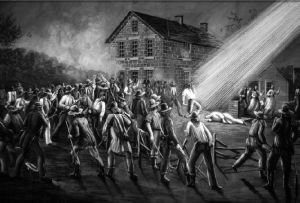
Would Daniels insist at trial that the incredible portions of his account were accurate and thus face ridicule, or would he admit to embellishment or downright lies? Either prospect had to be a major concern to prosecutor, and former state attorney general, Josiah Lamborn.
The Trial
On the morning of May 21, 1845, in a two-story brick courthouse in Carthage, the case of People v Levi Williams was called. Standing trial before Judge Richard M. Young were five Hancock County residents accused of conspiring to murder of Joseph and Hyrum Smith. They were defended by a team of lawyers that included Orville H. Browning, called "perhaps the ablest speaker in the state." Ironically, Browning had represented Joseph Smith in his successful effort to fight extradition to Missouri. Joining Browning at the defense table were Colonel William A. Richardson, Calvin A. Warren, and Archibald Williams.
On the first day of the trial the defense played its key card. It moved that the panel of potential jurors chosen by the Mormon-dominated county's commissioners be discharged on the grounds of prejudice against the defendants and they be replaced by a new panel chosen by a court-appointed panel of elisors. The novelty of the defense proposal, and the lack of case law supporting it, proved surmountable obstacles for Judge Young, who granted the motion. A new array of potential jurors was quickly selected from bystanders at the court. Only four of the ninety-six men chosen for the panel were Mormons. Judge Young's decision only served to reinforce the general feeling among the county's Mormon population that the justice system was stacked against them and they should have nothing to do with the trial.
The State's Case
In his opening argument to the jury of twelve non-Mormon men, Prosecutor Josiah Lamborn called the five defendants "the movers and instigators of that mob who committed the crime." Lamborn declared, "The guilt of this crime hangs over you as a blight and a curse which is destroying your character, and gnawing at the root of your prosperity." There can exist, he said, "no equal rights, no patriotism" when mob murder is "permitted to exist."
On the day of the murders in Carthage, witness John Peyton marched towards Nauvoo with other members of the Warsaw militia. He told jurors what happened after the militia reached "the railroad shanties," a landmark about six miles from Warsaw. Peyton testified that Colonel Levi Williams discharged the three companies of militia (one lead by Grover, one by Davis, and a third from the town of Green Plains) at the shanties and then "beat up" for volunteers to go to Carthage. Peyton said that battalion commander Mark Aldrich told the men that the time had come to "do something to stop" the Mormon power grab in Hancock County. Peyton, however, refused to say that any of the defendants specifically incited the killing of the Smiths. "I could not tell what their intention was," Peyton replied in a response to a question from Lamborn. The witness testified that, after the speeches by Williams and Aldrich, about a hundred armed men (including Williams, Aldrich, Thomas Sharp and William Grover) set off for Carthage, ten miles to the east. Defendant Jacob Davis, Peyton said, did not join the march and instead headed toward home. Following Peyton to the stand, George Walker told jurors that Jacob Davis, in explaining to others at the time why he headed home and not to Carthage said: "[I'll] be damned if [I] would go kill a man that was confined in prison."
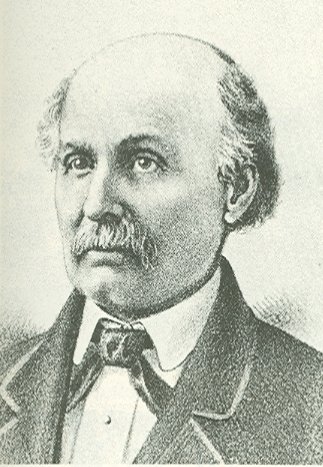
The prosecution took a risk in calling anti-Mormon activist Franklin Worrell. Worrell had reportedly warned a Mormon who visited the jail on the day before the murders, "We have had too much trouble to bring Old Joe here to let him escape alive, and unless you want to die with him you better leave before sundown." Unsurprisingly, Worrell would admit to no such advice on the witness stand, but he did testify to watching men disguise themselves "by wetting their hands in powder, and then putting their hands on their faces." He described how the mob approached the jail and how "they made a rush for the door." Worrell testified there was "so much noise or smoke that I could not see or hear anything what was said or done." Committing what was quite obviously perjury, Peyton claimed he "did not see any of the defendants at the jail." The hostile witness proved for the prosecution only what was already conceded--that a mob killed Joseph and Hyrum Smith--but did nothing to incriminate any of the five defendants. After hearing from a few other witnesses, Lamborn recalled Worrell to the stand to ask, "Do you know if the Carthage Greys that evening loaded their guns with blank cartridges?" Two defense attorneys immediately rose to advise Worrell from answering the question. Young offered that Worrell could refuse to answer if he felt that by so doing he might incriminate himself--a suggestion that Worrell accepted. The obvious implication of Worrell's assertion of the privilege against self-incrimination is that at least some of the Carthage guards were willing participants in the plot to kill the Smiths.
The next three prosecution witnesses, members of the Carthage Greys who were assigned guard duty, placed Aldrich, Williams, and Sharp in Carthage just before the five o'clock assault on the jail. The witnesses described a chaotic scene around the jail and then Joseph Smith's fall from the second-floor window. By the time the troops reached the jail, according to the witnesses, the Smiths were dead and the mob was beating a hasty retreat. None of the three witnesses reported overhearing any conversations that would specifically tie any of the defendants to the actual murders.
Perhaps the most eagerly anticipated witness for the state was twenty-four-year-old William Daniels, a recent convert to Mormonism and author of the booklet about the murder of Joseph Smith that included several sensational elements. In the account Daniels gave the jury, Thomas Sharp spoke at the shanties of "the necessity of killing the Smiths to get rid of the Mormons." Shortly after Sharp's speech, Daniels testified, volunteers willing to kill the Smiths stepped forward. The first volunteer was defendant William Grover, who was so enthusiastic about the effort that he said "he would come alone" if need be to get the job done. Daniels told the jury that from sixty to one hundred met and set off on foot for Carthage. They did so, Daniels testified, with the knowledge that the jail guards would be carrying guns with blank cartridges. Daniels said that immediately before the attack on the jail was launched, Williams yelled, "Rush in, boys, there's no danger." Daniels reiterated his belief that Joseph Smith had not yet been shot when he fell from the second-floor window and that "three or four" shots were fired after he fell.
Lamborn, anticipating that the defense would use Daniels' booklet as the centerpiece of their cross-examination, asked the witness if he was in fact the author. Daniels answered, "Lyman Omar Littlefield is the author," adding, "I suppose he got it from what I told him--I told him the story a good many times." Lamborn knew that the "pillar of light" that saved Joseph Smith from an imminent mutilation would require some explaining, so he took the initiative. "Explain it to us," Lamborn urged his witness. "It was represented in the book rather different than it was," Daniels replied. The prosecutor suggested that the light might have "been the reflection of a musket," but Daniels resisted conclusions: "I don't say what it might have been." Whatever its source, Daniels told the jury, "I was considerably excited."
Orville Browning's effective cross-examination exploited both inconsistencies and implausibilities in the several accounts Daniels had given of the murders. His questions reminded the jury that, according to his own account, Daniels had advance knowledge of the plot, yet took no action to warn the Smiths or authorities who might have prevented the murders. Browning got Daniels to say, "The facts in the book are about as right as I could tell them"--an admission that undermined the prosecution's efforts to tie the account in the booklet to Lyman Littlefield instead of its witness. Browning elicited testimony that contradicted the account in the booklet in several particulars. For example, while the booklet reports that Joseph Smith mortally wounded three men, on the stand Daniels testified only that he saw three members of the mob wounded in the attack.
Browning saved his heaviest ammunition for his questioning of the Daniels/Littlefield account concerning the appearance of a miraculous pillar of light just as a ruffian was ready to sever Smith's head with a bowie knife:
Q: At what time did you see this marvelous light?
A: I saw it at the place after the shooting.
Q: How long after?
A: A short time after.
Q: Well, tell us about that light.
A: It was like a flash of lightening there at that moment.
Q: It was not a streak then?
A: It was like a flash.
Q: Was it where is body lay?
A: It passed by his body at one side.
Q: When he was shot, did any person go up to him?
A: Yes, a young man attempted to get at him.
Q: Had he anything in his hand?
A: He had a pewter flute in his hand.
Q: Had he a bowie knife in his hand?
A: I did not see any.
Q: Did he get to Smith?
A: No.
Q: What stopped him?
A: That light.
Q: How did it affect him?
A: He did not go any further.
Q: Did he look frightened?
A: I don't know. I was very much frightened myself.
Q: Then you did not see him stand "like a marble statue"?
A: No.
Browning then read from the Littlefield/Daniels account, with its description of a frightened and paralyzed bowie knife-wielding assailant. Daniels responded by telling jurors that he told Littlefield after publication of the book that it contained several mistakes. Minutes later, Browning asked Daniels if he ever told anybody "that you had written a book and expected to make a great sum of money out of it?" Daniels answered, "I don't know that I did or did not."
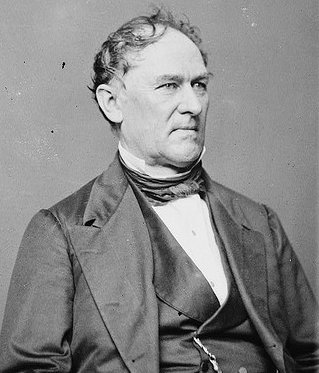
Eliza Jane Graham, a thirty-three-year old Mormon woman from Nauvoo, appeared nervous as she testified about what she saw at the Warsaw House, an inn run by her aunt and where she worked as an employee. Graham told jurors that around dusk on the night of the murders, Thomas Sharp and another man appeared at the Warsaw House. Sharp asked for a glass of water and announced, "We have finished the leading heads of the Mormon Church." Later that night, according to Graham, Davis and Grover showed up at the tavern and openly discussed the killing of the Smiths. Grover even bragged that he had been the actual killer of "Old Jo," as he called Joseph Smith. Browning used his cross-examination of Graham to raise doubts about her ability to recall the exact words of a conversations from the previous year and to suggest that, as a Mormon, she might have an interest in incriminating the defendants.
The last witness of real significance presented by the prosecution was eighteen-year-old Benjamin Brackenbury, who spent the day of the murders working as a baggage wagon driver in the Warsaw militia. Brackenbury testified that as volunteers marched toward Carthage they were met by a messenger sent by the Carthage Greys, who reported to the men, "Now is the time to rush on: the Governor is gone to Nauvoo and there is nobody in Carthage but what you can put dependence on." Brackenbury, alone among the state's witnesses, placed all five of the defendants near Carthage shortly before the murders. At the time shots rang out from the jail, Brackenbury was stationed about a quarter mile away in his wagon. He watched as men ran back from the direction of the jail. "They said they had killed the Smiths," Brackenbury testified. Asked if Grover was among the men returning from the jail, Brackenbury answered: "Yes, he said he had killed Smith, that Smith was a damned stout man, and that he went into the room where Smith was, and that Smith had struck him twice in the face." Brackenbury confirmed earlier testimony that three members of the mob--Wills, Voras, and Gallaher--had been injured during the assault. Browning's cross brought an admission from Brackenbury that "I had something to drink that day and had taken enough to make me feel nice." Browning scored points with the concession from the witness, "I should have remembered things better if I had not felt so [nice]." Brackenbury also didn't help the prosecution when he described his present occupation as "loafering."
The Defense's Case and Closing Arguments
Over the course of just a single day, the defense presented its sixteen witnesses. No defendants testified, and no witnesses were called to offer alibis. Instead, the defense focused its efforts on impeaching the three key witnesses presented by the prosecution: Daniels, Graham, and Brackenbury. Former grand jury foreman James Reynolds, for example, was called to testify that Brackenbury's testimony before the grand jury the previous fall differed in several particulars from his testimony at the trial. Three witnesses testified that Daniels had told them the night of the murders that he participated in the actual assault on the jail, something he denied in his trial testimony. Charles Andrews, Daniels's brother-in-law, told jurors that Daniels had bragged that he could get $1000 from the state for testifying at the trial. Four other witnesses said they heard similar stories from Daniels about a pay-to-talk deal. The defense's final witness was Ann Fleming, the proprietor of the Warsaw House where Eliza Graham worked. Fleming contradicted Graham's testimony that Sharp had called for a glass of water and announced the Smiths were dead. She testified that she could not recall seeing either Sharp or Grover at her tavern that evening. On that high note, the defense rested.
On a Wednesday evening, with a single candle lighting the faces of the twelve jurors, Josiah Lamborn began his closing argument for the state by offering a series of startling concessions. He admitted that William Daniels, generally considered to be the state's star witness, "has made statements which ought to impeach his evidence before any court." As a result, Lamborn said, he "therefore excludes Daniels' evidence from consideration by the jury." He then waved off the evidence of Benjamin Brackenbury: "Brackenbury was drunk, is a loafer and perjured himself before the grand jury." Finally, and most surprisingly, he dismissed the evidence of the last of his three key witnesses, Eliza Graham. Although he said he was "sincerely of the opinion that she spoke the truth," the testimony of several contradicting witnesses convinced him that he should "give her up." Then Lamborn begin dropping whole cases against some of the defendants. Lamborn said that although he "had not a particle" of doubt as that Davis was a member of the murder conspiracy, "there is no legal evidence to convict him." The same went for Grover even though, Lamborn said, "I verily believe he was at the jail with a gun." The cause of Lamborn's shocking concessions is not known, but speculation has ranged from fear for his own life (the courtroom crowd was overwhelmingly pro-defense) to an effort to win points from the jury for his impartiality to the promise of a pay-off by acquitted defendants or their supporters. After writing off the better part of his case, Lamborn limped along for another hour or so, suggesting that there still might be enough evidence to convict each of the three remaining defendants, Sharp, Aldrich, and Williams.

After Lamborn's anemic close, the defense probably could well have foregone offering its own. Nonetheless, three members of the defense team stood to deliver arguments. Calvin Warren told jurors, "If these men are guilty, then are every man, woman and child in the county guilty. The same evidence that has been given against the defendants could have been given against hundreds of others." Onias Skinner used his time with the jury to attack the prosecution's witnesses. He reminded them of the "absurd and stultifying statements...[that] sent successive sensations of mirth and disgust through this audience and shocked the jury and every spectator at their utter depravity and degradation." Skinner proceeded to argue that the evidence failed to support finding that a conspiracy existed to murder the Smiths, and that the actual murders could well have been committed by men with whom the defendants had no connection. Finally, Orville Browning rose to denounce "the crusade commenced against these defendants" and to suggest to the jury that by their acquittals they will "restore peace" to the county and prevent "a bloody and terrible war" that could result from their decision to convict.
At 11:30 on May 30, 1845, the jury began its deliberations. Two hours later, the jury reported its verdict: acquittals for all five defendants.
Trial Aftermath
Few Mormons in Nauvoo were surprised with the jury's decision. Brigham Young wrote in his journal that the verdict was just as he "had anticipated." A story on the trial in the Nauvoo Neighbor noted that convictions never are to be expected in "martyr cases." The trial outcome, to a large extent, vindicated the prediction Browning made in his closing argument: it restored a measure of peace to Hancock County.
In the fall, a jury also acquitted a group of Mormons charged with the destruction of the Nauvoo Expositor. In his History of Illinois, Governor Thomas Ford, reflecting on the two 1845 trials, wrote, "No one would be convicted of any crime in Hancock; and this put an end to the administration of the criminal law in that distracted county."
In February 1846, Brigham Young announced to his Mormon followers in Nauvoo that the time had come to begin their long-anticipated exodus, and wagons full of Latter-Day Saints crossed the ice-covered Mississippi, the first leg on a westward journey that eventually took them to Salt Lake City.
